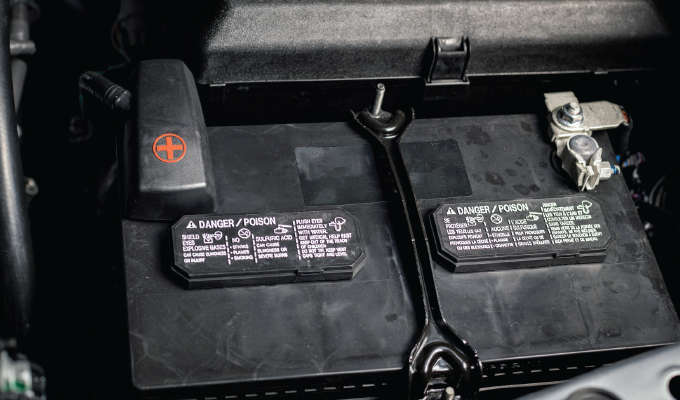By Vicki Hall and Bryce Gregory
As the COVID-19 pandemic continues to require precautions to avoid infection, truck drivers have come to depend upon the use of mobile electronic devices, such as cell phones and tablets, to substitute for direct in-person contact. An article in the September 2020 issue of Modern WorkTruck Solutions cites increasing driver dependence on electronic communications, cell phones, and Global Positioning Systems (GPS) that enable them to be directly and dynamically dispatched. The article also mentions the growing use of email and remote conferencing.
The Centers for Disease Control (CDC) recommends that drivers minimize or eliminate unnecessary contact with people in all aspects of their jobs. This recommendation starts by minimizing the time spent outside the cab. Recommendations include:
- Using radios or phones for contact with dock managers and other drivers
- Refrigerators for food storage to eliminate the need for eating in restaurants
- Air conditioning to provide proper ventilation
The increased use of these accessories, including recharging batteries for mobile devices, increases the burden on the vehicle’s battery. This makes battery maintenance more critical during the COVID-19 pandemic. Having a battery that requires minimal or no maintenance can help the driver ensure sufficient power for the vehicle and electronic devices while reducing the time and attention that maintenance requires. Unscheduled service is another opportunity for unnecessary interactions, in addition to the normal lost productivity, which now carries the additional risks associated with COVID-19.
MAINTENANCE-FREE IS KEY
Absorbed Glass Mat (AGM) batteries offer the lowest maintenance option for drivers and fleets. Unlike conventional flooded lead acid batteries, AGM batteries contain fiberglass separators placed between each plate to absorb the electrolyte. This makes the battery leakproof with no additional water or electrolyte ever required. The plates and separators are also compressed, which provides the battery with better shock and vibration resistance. Furthermore, an AGM battery is less prone to sulfation, which is the accumulation of lead sulfate in the cell when the battery is left undercharged too often.
TPPL TECHNOLOGY
In addition to virtually maintenance-free service, AGM batteries that feature advanced Thin Plate Pure Lead (TPPL) technology offer even more advantages. AGM TPPL batteries feature pure lead plates. The pure lead components do not corrode (unlike conventional flooded and standard AGM batteries). The TPPL plates can be made thinner than lead alloy plates, which allows more plates to be used. More plates mean more surface area. More surface area provides more power and higher cranking capability.
PROPER CARE
TPPL batteries do not require the monthly electrolyte level checks and distilled water refills that flooded lead acid batteries do, but they should be properly installed, cleaned, and charged for reliable service and long life. It is important to keep the battery and battery terminals clean and the battery mounted securely in position.
When batteries are in trucks sitting idle for an extended period, they should be disconnected from any electrical loads or connected to a trickle charger. This will keep onboard accessories from draining the battery. Remember that flooded and AGM batteries have different charge settings, so using the appropriate charger designed for the chemistry of the battery in question is essential. Batteries properly charged prior to storage or use help ensure optimal performance during next use. If the vehicle is on a calendar-based Preventive Maintenance (PM) schedule, the PM frequency should be increased with more vehicle use.
BATTERY TESTING
Seasonal load tests can help assess the condition of the battery by its State of Charge (SoC). One method includes the use of a digital voltmeter to measure the battery’s Open Circuit Voltage (OCV). A voltmeter should be used at least six to eight hours after the battery has been charged to remove the surface charge and obtain an accurate voltage reading. The manufacturer’s specifications will provide the OCV that corresponds to 100% SoC, which ranges from 12.7 to 12.9 volts. If the SoC tests low, the battery may need to be replaced.
AGM TPPL batteries can replace other batteries of the same group size. In the event of batteries in series or parallel configuration, all batteries should be changed together. Differences in terminal types and configurations can affect the battery cable connections; the same terminal type will facilitate the change.

DEPENDABLE, RELIABLE
Answers to questions about installation and operation are usually available in the battery and vehicle user manuals. Always be sure to follow the manufacturer’s guidelines for battery care and handling, and direct any questions to your battery professional.
TPPL technology applied in batteries provide a longer life and more reliable service than conventional flooded lead acid chemistries. As drivers face increasing demands created by the COVID-19 pandemic, they need batteries they can depend upon to start their vehicles and power their accessories. With greater dependency on remote communications technology to maintain social distancing, the battery’s performance becomes all the more critical.
ABOUT THE AUTHORS
Vicki Hall is the director of transportation technical solutions at EnerSys, and Bryce Gregory is the systems product manager of transportation and specialty at EnerSys. EnerSys is a leader in stored energy solutions for industrial applications. Find out more, visit www.enersys.com.




